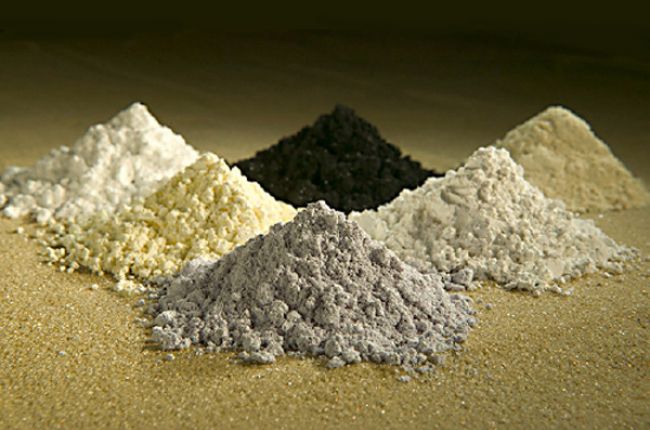|
In recent years the importance of Rare Earth Elements (REEs) has become increasingly critical in this age of high tech consumer products from cellular phones to hybrid vehicles. What are Rare Earth Elements and what role have they played in the past and in the world’s future?
The REEs are a set of seventeen metallic elements including fifteen lanthanides on the periodic table plus candium and yttrium. Although originally thought to be rare, many of the minerals are actually common in the earth’s crust. Rare Earth Elements are spread evenly over the earth but it is hard to find a lot in one place. They are also difficult to extract from the earth because REEs are usually found within other minerals, making them costly to mine. In the beginning In 1788 a miner in Ytterby, Sweden found an unusual black rock. The ore was called “rare” because it had never been seen before and “earth” which was the 18th century geological term for rocks that could be dissolved in acid. By 1794 this previously unknown “earth” yttria was named after the town where it was discovered. Carl Auer von Welsbach in 1880 became the first person to develop a commercial use for the Rare Earth Elements. Welsbach found a way to mix rare earth wastes with iron, creating a “flint stone” that sparked when struck. Ferrocerium was widely used in cigarette lighters and ignition-devices in automobiles. Welsbach also recognized the incandescent properties of REEs and developed an incandescent lamp that produced a bright light and could be mass produced. Rare Earth Elements took on a new scientific and, then, geopolitical importance during the 20th century. In 1939 Otto Hahn, Lise Meitner and Fritz Strassmann discovered nuclear fission of uranium and identified REEs in fission products leading to the atomic bomb. The arms race between the United States and Soviet Union during the Cold War (1945 to 1991) led to increases in government-funded research and development in many areas, including Rare Earth Elements. Corporations and industrial research generated new products for consumers. Until 1965 the major applications for REEs included using mixtures of Rare Earth Elements oxides for polishing lenses and as flints for lighters. One of the first major commercial uses for Rare Earth Elements came in 1965 when they were used in color television tubes. The 1970s and 1980s saw the development of the nickel-metal hydride battery which became popular for use in portable electronics and later in hybrid cars. The use of Rare Earth Elements in magnets is a rapidly increasing application for computer hard disks plus automotive systems such as power steering, electric windows, power seats and audio speakers. Because they have abundant magnetic, luminescent, electrochemical and thermal properties, Rare Earth Elements have made possible smart phones, electric cars, light-emitting diodes, wind turbines, medical imaging, fiber optic cables, defense systems and much more. Where on the earth can Rare Earth Elements be found? China has been the leading producer of Rare Earth Elements for decades and since the late 1990s, it has accounted for more than 90% of global production on average. After China, the world’s largest REEs reserves are in Vietnam, Brazil, Russia, India, Australia, the United States and Greenland. REEs mining projects within the United States are located in Bokan Mountain, Alaska; La Paz, Arizona; Diamond Creek, Idaho; Lemhi Pass in Idaho and Montana; Pea Ridge, Missouri; Elk Creek, Nebraska; Thor Mine, Nevada; Round Top, Texas; and Bear Lodge, Wyoming. Rare Earth Elements are not exchange-traded like gold and silver which makes their prices hard to monitor and track. Pricing on REEs can vary based on the quantity and quality required by the end user. The future of Rare Earth Elements As China began restricting the distribution of REEs through quotas, licenses and taxes, the world rare-earth industry has changed by encouraging stockpiling, increased exploration and development of deposits outside of China. New efforts are being made to conserve, recycle and find substitutes for REEs as demand for these elements is higher than the supply of them. Potential disruption in the Rare Earth Elements supply chain could be a critical world crisis and disastrous to the United States’ long-term economic and national security.
0 Comments
Leave a Reply. |
AuthorsCurrent and former staff members have contributed to our newsletter over the years. Now the articles are available to view here on our blog Categories
All
|
© 2024 Ski Landscape Corporation - Website by Day Design


 RSS Feed
RSS Feed